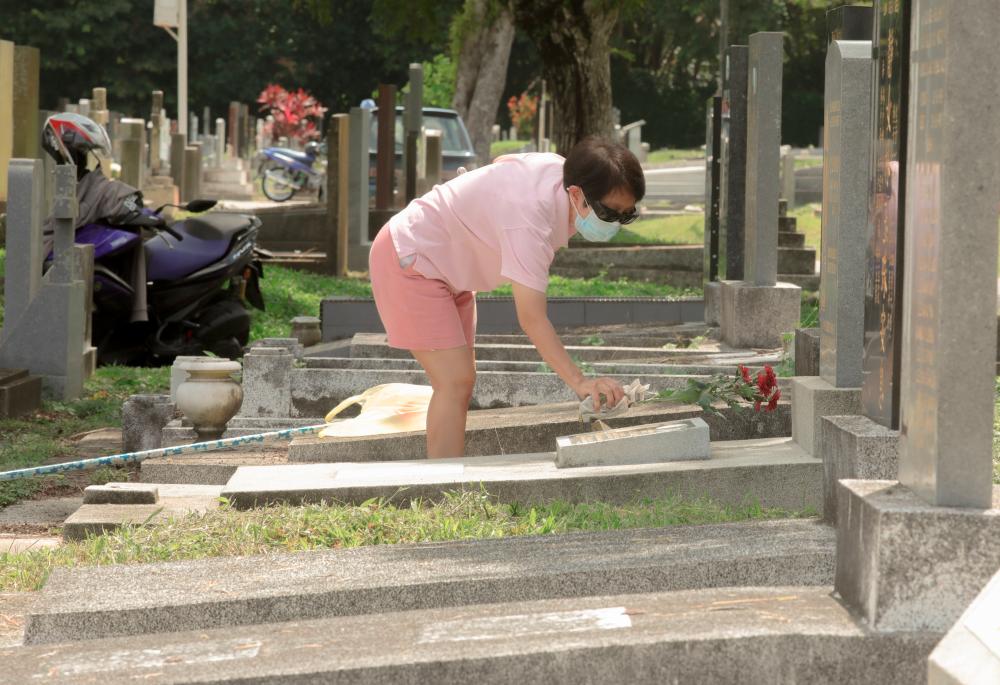PETALING JAYA: The management of the Kwong Tong Cemetery (KTC), which is the largest and oldest graveyard in Kuala Lumpur, is hoping to gain “National Heritage Site” status.
Its president Lim Soo Lek said KTC is a cultural asset not only to the Chinese community but also the country and perhaps the world.
“According to a monument erected in 1925, KTC was founded in 1895, which was also the year the then British government announced its establishment in the constitutional gazette. Therefore, we estimate that it is now at least 128 years old.
“The burial ground along Jalan Dewan Bahasa covers an area of 106ha, and the accumulated area in Sungai Besi exceeds 36ha.
“Starting in the 2000s, two modern cemeteries – Kerayong Modern Burial Lots (20ha) and Sungai Besi Modern Burial Lots (2ha) – were developed, making it the largest cemetery in Kuala Lumpur.”
Lim said since the cemetery is located at a strategic site, property developers may seek to develop it into a commercial area, adding that KTC was previously included in the “Heritage Preservation Zone” in the 2020 Kuala Lumpur City Blueprint.
But it has since been designated as a “future commercial development zone” in the 2040 Kuala Lumpur Structure Blueprint Draft.
“Kuala Lumpur’s development has become unbalanced and commercial value overrides everything, while culture, history, ecological protection, art and the people’s emotions and memories are rarely discussed in urban development.
“We oppose development that only focuses on commercial value and hope that everyone can see the cultural treasure contained in KTC, beyond just business opportunities that Kuala Lumpur has to offer,” said Lim.
“Once the historical heritage is lost, it will be an irreversible, permanent loss.”
He added that transforming KTC into a historical heritage requires a lot of funds and professional input, while expressing hope that “the government and people of all ethnic groups can work together to support this endeavour”.
Lim also said the cemetery is busy around this time of the year for the Qing Ming Festival. Located in the heart of Kuala Lumpur, KTC expects around 2,000 to 2,300 vehicles on weekdays and 5,000 on weekends throughout the festival period.
“From March 18 to April 16, we requested police and Rela to assist in traffic control. Before the Qing Ming festival, we also held a press conference on March 10 to announce traffic route information and urged everyone to arrange their travel plans early to avoid coming during peak periods.
“We also encourage everyone to consider using alternative methods such as carpooling and using public transportation to prevent traffic congestion,” Lim said, adding that KTC is the final resting place for more than 200,000 deceased individuals.
“There are more than 140,000 buried in the cemetery area. The Old Pagoda columbarium (to house the ashes of those cremated) is more than 80% occupied, with more than 29,000 urns.
“More than 55% of the total lots at the New Pagoda has been taken, with more than 47,000 urns,” he said.
“KTC provides affordable burial plots and columbarium units, and there is also a funeral parlour for conducting final ceremonies. Basic facilities such as parking bays, restrooms and spaces to place offerings are also available.
“We encourage the practice of providing adequate care for our elders during their lifetime and a simple burial after death.
“The most important aspect of a funeral is the sincerity of one’s heart. The extravagance of the event is merely an enhancement,” added Lim.









